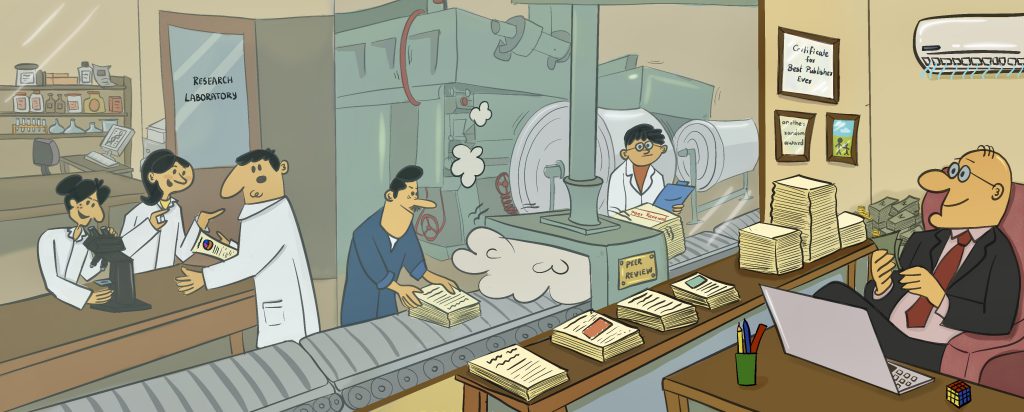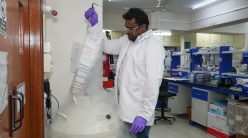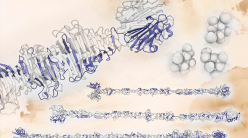The promise and perils of scientific publishing

Midway through 2025, a young researcher was wrought in thought. He knew that he had a paper that was good, worthy and ready to be shared with the world, but he hesitated. It was not a lack of confidence nor a matter of insecurity. It was a question of money. Publishing in a reputed journal would help his career, but it required a hefty payment of multiple lakhs. He could publish elsewhere, maybe in a society journal, but with a long career in academia ahead, he was unsure of how the paper would be received by his peers, or what impact it might have.
The scientific publishing industry’s main job is to put forward advancements and discoveries made by scientists. But some publishing companies have been gatekeeping research advances, running a lucrative business aimed at maximising profits. High costs for submitting articles to reputed journals, as well as the subscription cost, mean that not all scientists can equally access the benefits of the publishing world.
For years, the scientific community has argued, pontificated, and grown increasingly concerned by this sombre reality hiding behind the veneer of the knowledge-sharing industry. However, the prestige that comes with publishing in top journals is so intimately intertwined with academic success that it ensures that the current system – however expensive – remains in place.
Writing at a price
Scientific publishing started in the mid-17th century to share new learnings, an advancement from the informal correspondence and science salons that predated it. It evolved over time, but it was in the mid-20th century when it transformed into a commercial business.
A young former army man, Robert Maxwell, was tasked to manage a struggling and inefficient British science publishers’ partnership with the German company Springer. Maxwell took control of the project and, with the aid of his editor Paul Rosbaud, created a capitalist’s dream. They acquired companies, introduced new journals, streamlined the process of editing and publishing scientific advancements, struck exclusivity deals with scientists and built an empire. Over time, the scientific publishing business became highly profitable, with global revenues exceeding £19 billion according to a 2017 Guardian article.
Over time, the scientific publishing business became highly profitable, with global revenues exceeding £19 billion
These remarkable revenues are the result of an interesting business model. Scientists produce materials for publishing; their expenses are covered by their institute, the government, or private grants. Most of the editorial process, including verifying accuracy and originality, is done by peer review, undertaken by scientists largely voluntarily; many consider, or are expected to consider, this as part of their responsibility to ensure correct science. Though the publishers have staff and editors across the globe, the overheads remain relatively low. They then sell the published products back to the institutions, universities, and libraries for a premium, labelled as subscriptions.
Some publishers earn profit margins comparable to Google because in addition to a subscription fee, they also charge a publishing fee from the scientists. While paywalled articles that need subscriptions usually avoid this fee, those that are free require the scientists to pay an Article Processing Charge (APC) that can go up to thousands of dollars. What was once a fee to offset the publishing cost during the era of print journals has morphed into something inexplicably large, especially as many articles, over time, have become online-only. This is particularly challenging for the Global South, where the exchange rate equals a terrifying expenditure. This financial burden not only eats into the government and institutional budgets but also creates a knowledge imbalance, with cash-strapped institutions struggling to keep up with the latest advancements.
Some journals, however, remain free to publish, and the publishers do offer discretionary waivers of APC on a case-by-case basis. Several scientists from India have received this benefit over the years.
It was using this waiver that the researcher mentioned in the introduction published his work in a top journal. But that is a small victory in the costly world of publishing.
Accessibility conundrum
In 2011, Kazakhstani computer programmer Alexandra Elbakyan created Sci-Hub, a website that provides access to millions of research papers by circumventing paywalls and copyright restrictions set by the publishers. Elbakyan is considered a modern-day Robin Hood, wielding her programming skills to steal from the rich and give to the poor. For her efforts, which garnered widespread goodwill, she has been fighting lawsuits against copyright infringements for years.
Sci-Hub has been a major voice in the open access movement, a global push for free and open online access to academic information. The chorus became louder following the tragic suicide of programmer Aaron Swartz, an internet hall of fame hacker and open access activist; he took his own life in 2013 while awaiting trial after his arrest for mass-downloading articles from JSTOR (an online journal storage site). Swartz’s death opened up conversations about the democratisation of information and open access.
The publishing houses, on their part, have started several methods to balance profits with open access to their repositories. There are Gold Open Access journals where authors have to pay a substantial cost to publish, but the articles are free to read. There are also articles are free to read. There are also Read and Publish agreements (where the institute makes a deal with the publishers to gain access and waive the APC) and Subscribe to Open models (existing customers maintain their subscriptions to keep the content open for the wider world), among others. But they all tackle only a part of the problem. Merits of models such as pay-to-publish (where the author pays to ensure free access to readers) and pay-to-read (subscription) are still widely debated.
The publishing houses, on their part, have started several methods to balance profits with open access to their repositories
Initially, only publishers using the Gold Open Access model, where the entire journal is open access, charged APCs. But soon, several became hybrid open access, where the journal is subscription-based with a paywall, and the author will have to pay extra to make their work open access. “That is double-dipping. Some publishers say that the money raised will go to subsidising the general subscription price for journals, but it does not make much of a difference. Also, libraries generally do not receive a refund for the subscription fees paid to access a scientific paper if in case it gets retracted,” explains Umeshareddy Kacherki, librarian at the JRD Tata Memorial Library, IISc.
The Indian government’s introduction of the One Nation One Subscription (ONOS) plan is a step in the direction of open access. A sizable number of participating universities and institutions, even from tier two and three cities, can access papers from about 30 major international publishers under a national license. The government also plans to provide financial support to authors to publish in open-access journals.
Publish or perish
The publishers’ high costs are often attributed to the multiple services they provide. Beyond editing, streamlining processes, ensuring image and research quality, and other publishing responsibilities, they also provide user-friendly software that suggests optimal peer-reviewers, stringent plagiarism tests and similarity reports, among others. Such is the level of vigilance that they even alert scientists about potential editors with dubious reputations. These companies further provide language editing for non-English speaking scientists, formatting, guidance, and publishing masterclasses to young researchers. Once published, the work is sent to all the libraries and hyperlinked and processed thoroughly such that all citations and references are easily accessible. The publishers also provide shareable links to the author sometimes, through which their published work can be read and shared, though not downloaded or screen-grabbed.
Nevertheless, some scientists believe that the APC costs are, at times, a bit too high. In 2023, more than 40 editors resigned from two leading neuroscience journals, citing an ethical dilemma over the high APCs being charged.
A major reason why scientists continue to pay prohibitively high APCs to publish in reputed open access journals is because of their high impact factors, i.e. the frequency with which the average article in a journal is cited in a year.
Poignantly, scientists themselves have a fair share of the blame to shoulder for allowing impact factors to decide much of their fate. Having their research published in high-impact or Q1 journals (the top 25% of the reputed journals) is seen as a matter of prestige.
“Earlier, you sent papers based on their relevance to a particular journal. Now impact factor is driving everyone,” points out Elangannan Arunan, Professor at the Department of Inorganic and Physical Chemistry, IISc, and listed in the 2024 PCCP (Physical Chemistry Chemical Physics) outstanding peer reviewers.
A lot of the issues are also systemic and run deep within the core of how academia is set up. At every step of their academic career, scientists are encouraged to publish work in high-impact journals; in some institutes, this could play a role in the jobs they get, the grants they receive, and whether they get promotions or tenure. This has led to an explosion of scientific journals catering to the demand for publishing. Scopus.com lists over 48,833 journals, with Springer-Nature publishing over 3,000, Taylor & Francis 4,233, and Elsevier 2,232.
This ‘publish or perish’ mentality has also given rise to several predatory journals, which publish research without peer review to cater to the numbers game. While IISc and other top institutions are fairly insulated from these practices, the same cannot be said of others.
The desperation also opens doors to scientific misconduct, fraud, and an overinterpretation of results, leading to paper retractions. It was reported that over 10,000 research articles were retracted in 2023, a record. Over 8,000 of them came from journals run by an Egyptian company, which is a subsidiary of Wiley. In 2023-24, almost 7,000 cases of cheating using AI tools were found during a survey by the academic integrity violations in London. As per the Retraction Watch Database, India ranks third with 2,737 retractions in 2023.
This has led towards a research culture that sometimes incentivises quantity over quality, where publications become the currency of success
Ultimately, this has led towards a research culture that sometimes incentivises quantity over quality, where publications become the currency of success. Several institutions use the impact factor of journals as a metric to drive up their standings in the pecking order, such as NIRF (National Institutional Ranking Framework) and QS World University rankings, among others.
“It’s a consequence of institutions wanting numbers and trying to give incentives to people who publish for the sake of it. Fortunately, IISc does not do it,” says GK Ananthasuresh, Professor at the Department of Mechanical Engineering, IISc. “There are so many institutional rankings, and many of them are based on publications and citations. Researchers are also human; it’s tempting.”
Open science
Problems like these led Brian Nosek, professor of psychology at the University of Virginia, to establish the Center for Open Science (COS) in 2013. “We look at the problem in two ways,” Nosek says. “As a system, what are the rewards and incentives that drive a researcher’s behaviour? From an individual perspective, how does the system create biases in a researcher’s decision-making and reporting of the research?”
According to Nosek, what ends up in the research is biased as the rewards are for positive results and not for information that does not align with the dominant narrative, false stars and failures. There is also the chance that researchers could rationalise data in a way that looks best for the purpose of publishing.
“People are picking problems that can be published and not problems that need to be solved. Publication should be a result and not a goal. It should be about the significance of publication,” Elangannan agrees.
To that end, COS promotes a model called registered reports where the scientists submit their research plan for peer review before doing the work, and the journal commits to publishing the outcomes before they are known to anyone. This way, the decision to publish the research remains result agnostic. “Negative results are still results,” Nosek says. “But we can agree that the question and the method involved were good.”
Another solution could be having journals run by institutions, though that is easier said than done. The Journal of the Indian Institute of Science has a history dating back to 1914 and has published several important papers over the course of the century. However, the journal almost folded in 2006-07 before continuing as a multi-disciplinary review journal. Even then, it requires expert support in marketing, editing, formatting, and other administrative processes that go into publishing, which Springer provides.
“The agreement we came to was that we [IISc faculty and a guest editor] take care of the technical matters and they [Springer] take care of the marketing and everything else,” says Ananthasuresh, who is the Editor-in-Chief of the journal. “The main objective of the journal is to curate review articles in selected themes in emerging, contemporary topics, so that they will be available for free to researchers in India.”
The articles published have a six-month moratorium period after which they are freely accessible on the IISc Journal’s website. “Springer’s worldwide distribution helps, and since these are review articles, researchers value them … we get a reasonable impact factor,” he adds. The journal is especially a big help for developing countries that have limited money available for bulk subscription towards general scientific journals.
A more democratic approach that is gaining traction is uploading the pre-prints of research papers to the ArXiv, a free service and open-access archive. Papers are accessible and free to be commented on, albeit not peer-reviewed. IISc alone submits more than 600 papers a year to various ArXiv.
There are talks of alternative models, one among them being diamond open access, which is free to publish and read. This model has found success in Latin America, where the Scientific Electronic Library Online is funded by various agencies including the government. But it is yet to find solid ground in the rest of the world.
There is also a movement within the scientific community that is calling for publishing in journals under professional societies (like the American Chemical Society) and other open journals (think Indian Academy of Sciences). Although, in many of these alternative publishing options, the matter of prestige remains unanswered.
Thus, it becomes the proverbial question of who will bell the cat? To force a change, who would stand for a set of values that would likely be detrimental to a successful academic career? It is a tough ask and even tougher decision. One would think identifying the problem and finding solutions are right up the alley of scientists, but they, too, are bound by the same problems of money, job security, and career advancement that haunt the rest of the world. And the wheel keeps turning.
A hamster wheel.
(Edited by Rohini Subrahmanyam)




